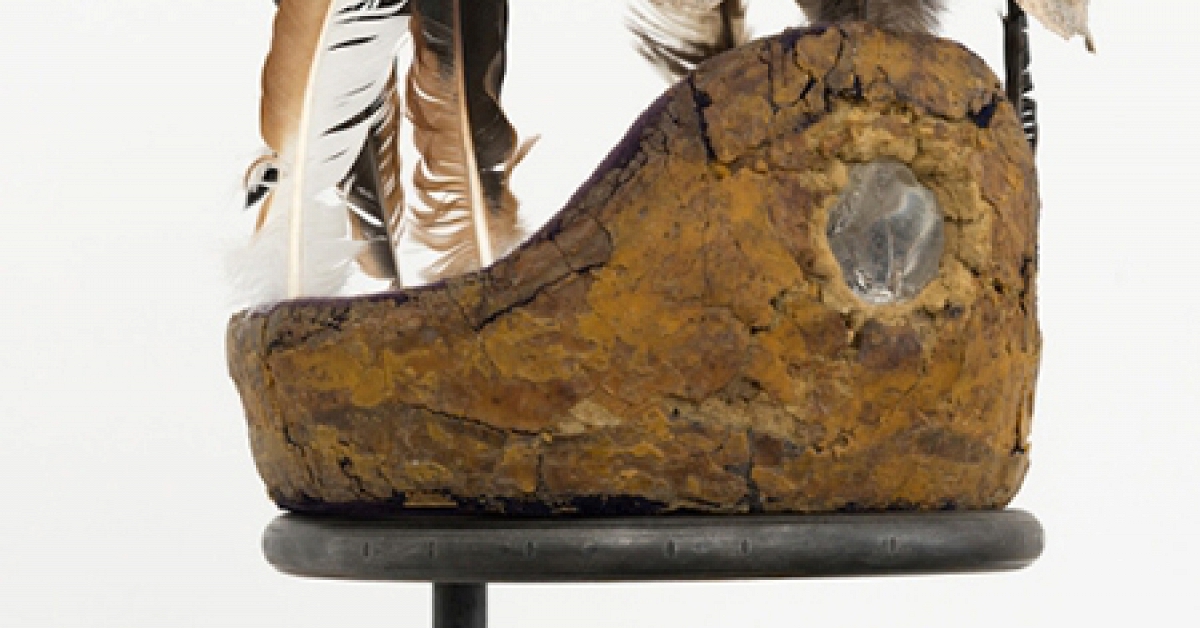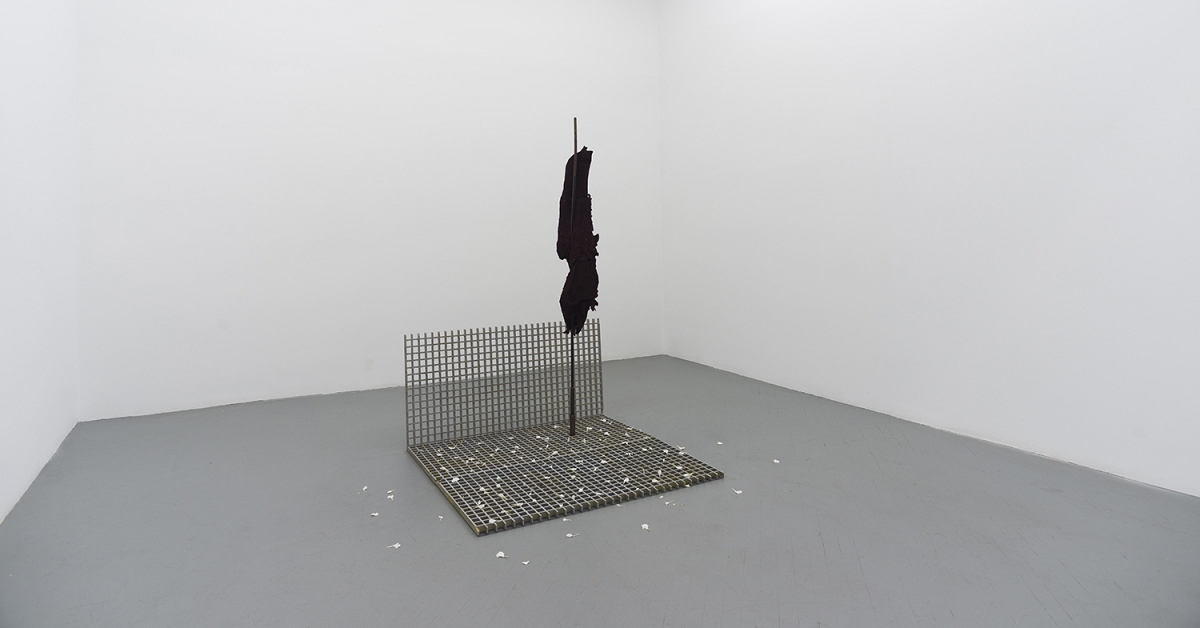Harold Mendez: The years now
The Brooklyn Rail / Mar 12, 2020 / by Robert R. Shane / Go to Original
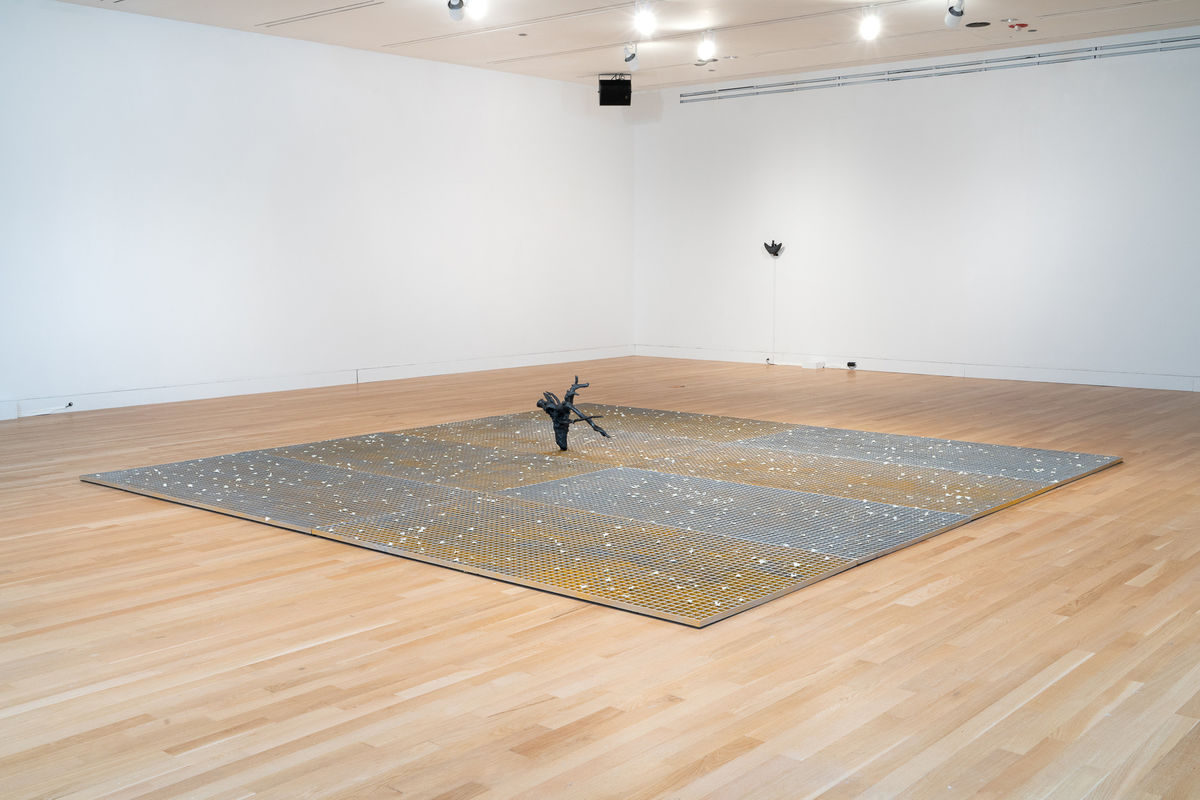
Installation view:Harold Mendez: The years now, Logan Center Gallery, University of Chicago, 2020. Installation view in the Logan Center Gallery, University of Chicago. Photo: Robert Chase Heishman.
The memory-work of a memorial, like a ritual, is performed in the present by a viewer or participant recalling or reenacting the past. Harold Mendez’s The years now memorializes centuries compressed into the singular space of the present. Mendez, a Chicago native whose past exhibitions include the 2017 Whitney Biennial, draws imagery from Mexico, his father’s homeland, and Colombia, his mother’s—as well as Peru, Cuba, and the United States—to bear witness to traumas from the history of colonization, diaspora, and present-day civil unrest in the Latin America and the US. Throughout the exhibition, Mendez politicizes a Minimalist and Post-Minimalist sculptural vocabulary emphasizing the relation of objects to their exhibition space.
In the exhibition’s title work,The years now (2020), a square grid of silver enameled fiberglass recalls stainless steel grating, stretching across the hardwood flooring like one of Carl Andre’s floor sculptures and echoing the geometry of the gallery’s square footprint. Just off center within the grid stands a small tree root segment, blackened by charcoal and exhibiting a dull sheen from graphite worked into its surface. It is shaped like a human heart and balanced on the point where the ventricles would taper; severed roots sprout like blood vessels from its top. Whether the root’s precarious presence on the fiberglass symbolizes organic life killed by its industrial environment or an ongoing vital persistence is ambiguous. Does it signify death? A sacrifice? The unknown loss is mourned with the scattering of white carnation petals across the grating—as in some indigenous rituals in Mexico—and replenished every few days by the curator.
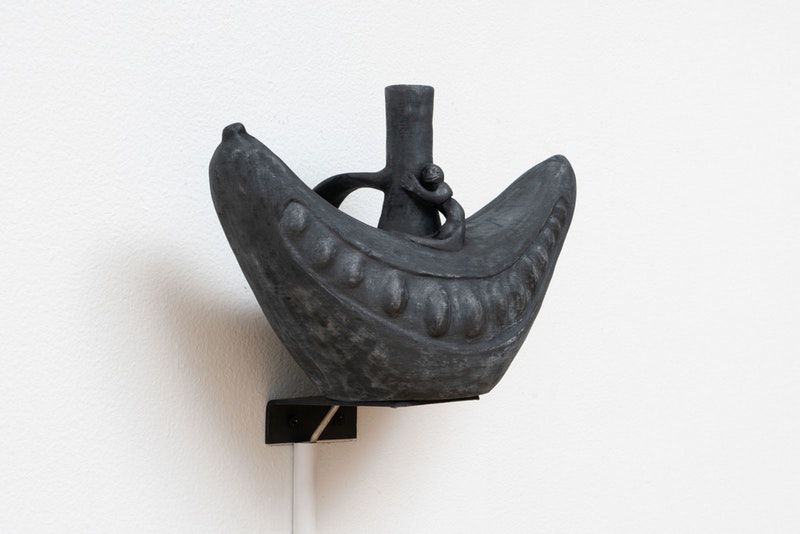
Installation view:Harold Mendez: The years now, Logan Center Gallery, University of Chicago, 2020. Installation view in the Logan Center Gallery, University of Chicago. Photo: Robert Chase Heishman.
A voice traveling through four speakers mounted on the corners of the ceiling and two smaller ones on the floor rhythmically compels the viewer to circumambulate around the floor piece. Little is known about this found recording of an unnamed Black poet who strives to find a sense of self in a society that denies him one: “who am I? / WHO AM I? / the louder I ask, the louder becomes a silence of no answer until it seems that silence is saying [reverb] / by saying nothing—you ain’t nothing.” Dislocated from the body and from its place in history, the recorded voice recites the full poem—which includes the line “the years now”—over descending minor chords on a piano. The poem and music repeat endlessly but filtered through software that continuously alters the sound through effects including echoes and delays. Like a ritual repeated for generations, no two iterations are ever exactly the same.
Moving with the voice’s transit, one eventually encounters a 3D printed replica of a Chimú pot mounted at eye level on the far end of the entrance wall, which was behind the viewer and not visible when first entering the space. The original was uprooted from the pre-Columbian site Chan Chan, Peru, where it may have been a burial object, and dislocated to Chicago’s Field Museum. This crescent-shaped vessel mimics a fruit, with a small monkey climbing its vertical spout. It looks like a boat adrift on an endless expanse of white wall. From deep within the handheld replica, also blackened by charcoal and graphite, emanates a trebly, ghost-like echo of the same recording, revealing a kinship between their diasporic stories.
A separate room of the Logan Center Gallery serves as a more intimate chamber for two slightly earlier works.but I sound better since you cut my throat(2017)—a title taken from the work of poet, philosopher, and critic Fred Moten, who has been a long-time intellectual collaborator with Mendez—is a segment of chain link fence around which a tree had grown and embedded itself. Taken from Houston’s Third Ward, where Mendez had a studio, this tree segment also suggests the shape of a human heart. The warped and galvanized steel fence post originates from the ceiling line, descends like a lightning bolt through gallery space, pierces through the wood, and finally lands on a point in the center of the floor. Linking upperworld and underworld through a sacrificial heart, the work is anaxis mundiaskew. Out of place, can it ever be righted?
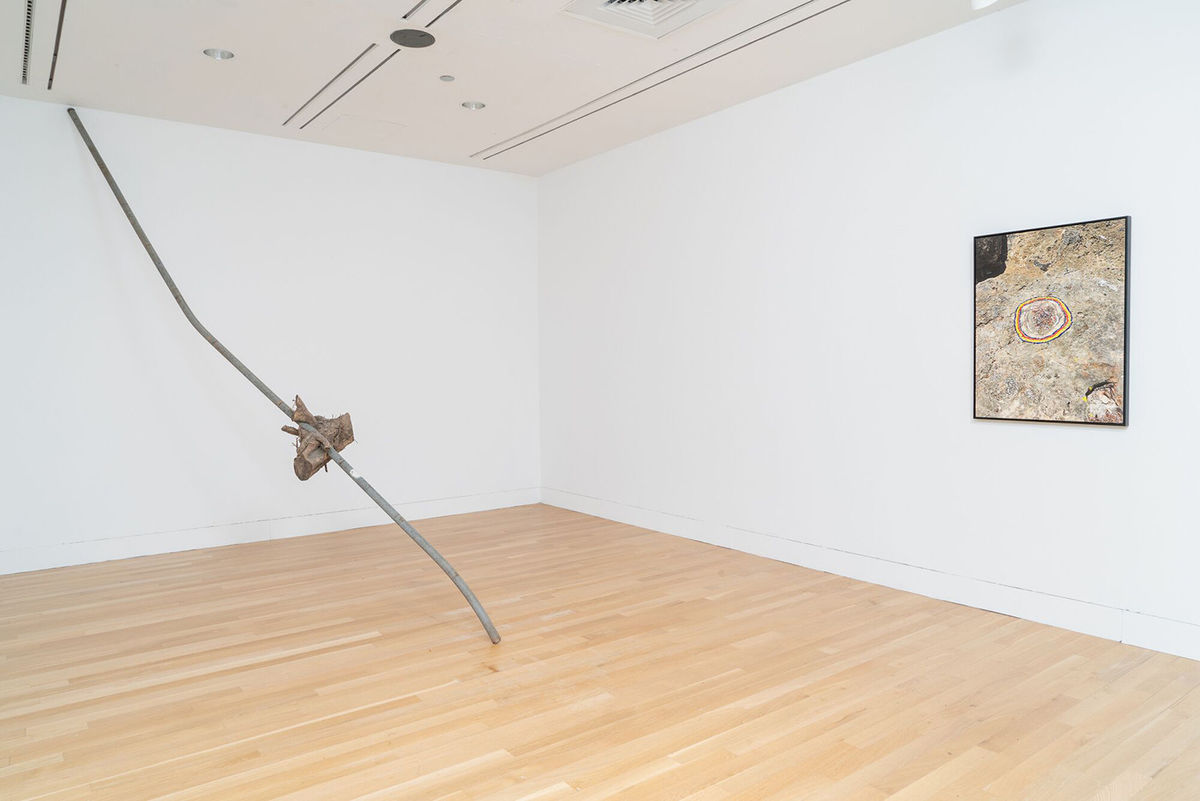
Installation view:Harold Mendez: The years now, Logan Center Gallery, University of Chicago, 2020. Installation view in the Logan Center Gallery, University of Chicago. Photo: Robert Chase Heishman.
Mendez’s photograph Consent not to be a single being (2018), another Moten title, records a small ritual site outside of Havana which the artist discovered while looking for the grave of artist Belkis Ayón. Concentric red, yellow, and blue circles drawn on a rock, feathers and other evidence of ritual, as well as prehistoric fossil forms, are visible in the print. The cropping of the camera’s viewfinder dislocates the ritual from its site of origin, but like the poet’s voice in the adjacent room demonstrates the persistence and vitality of the subaltern. Listening, moving, and looking—the viewer is asked throughoutThe years nowto bear witness and participate in a ritual of memory sustaining the past and present.




